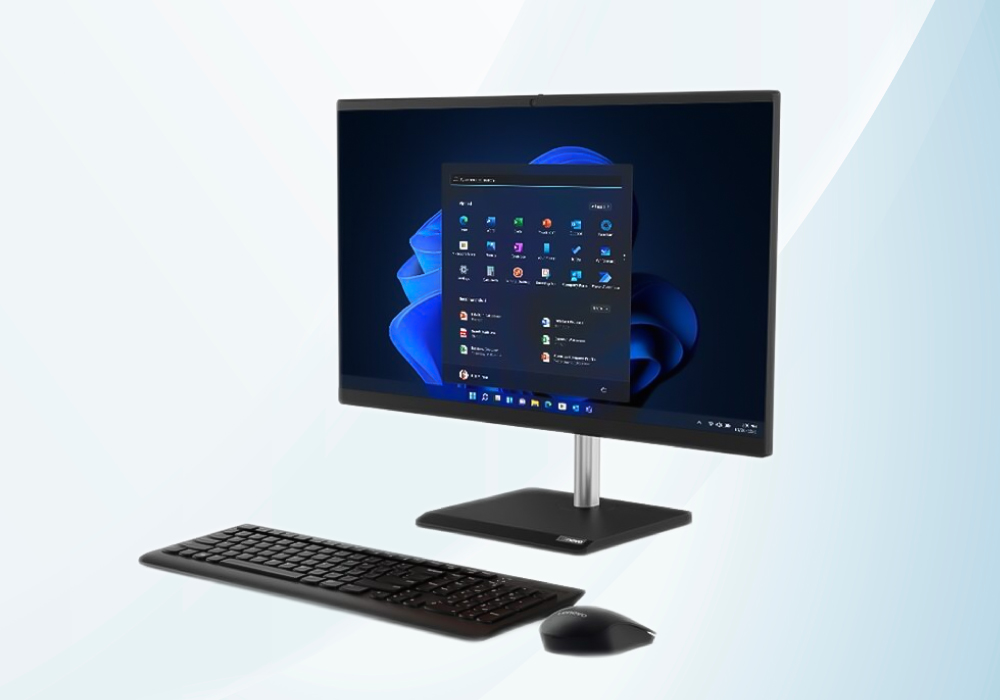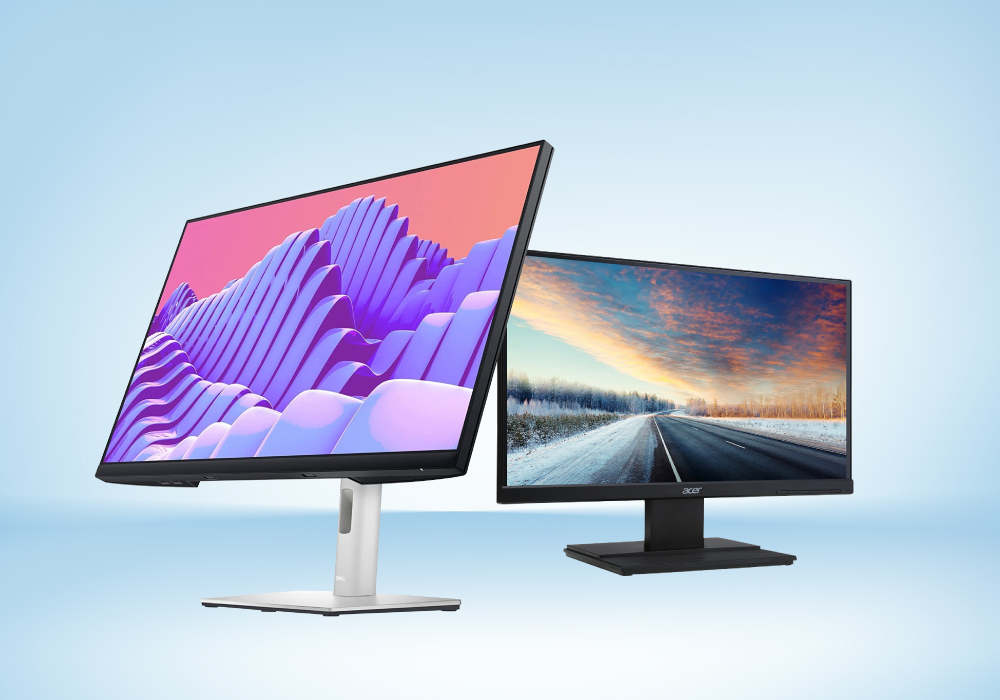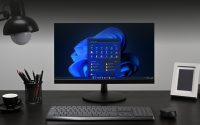How to Make Your Desktop PC Run Faster: Performance Optimisation Tips
Is your desktop PC starting to feel sluggish and slow? As technology evolves, software and applications become more demanding, and your trusty desktop may need help to keep up. The good news is that there are plenty of ways to optimise its performance and make it run faster without breaking the bank. In this comprehensive guide, we will explore various performance optimisation tips to breathe new life into your desktop PC, including targeted products like the Dell Precision 5820 Tower Workstation, HP 295 G6 Micro Tower, Lenovo ThinkEdge SE30 Mini PCs, Lenovo V35s-07ADA SFF Desktop PCs, ASUS Zen AIO, and Lenovo ThinkStation P360 Tower Desktop PC.
- Upgrade to an SSD (Solid State Drive)
One of the most significant upgrades you can make to boost your desktop PC’s performance is to replace the traditional hard drive with an SSD. SSDs are faster, more reliable, and consume less power than HDDs, resulting in significantly improved system responsiveness. Products like the Dell Precision 5820 Tower Workstation and Lenovo ThinkStation P360 Tower Desktop PC are compatible with SSD upgrades, allowing you to experience lightning-fast boot times and quicker application loading.
- Maximise RAM (Random Access Memory)
Insufficient RAM can slow down your PC, especially when running multiple applications simultaneously. Upgrading your RAM can lead to significant performance gains. Products like the HP 295 G6 Micro Tower and Lenovo V35s-07ADA SFF Desktop PCs allow for easy RAM upgrades. Aim for at least 8GB of RAM to ensure smooth multitasking and enhanced overall performance.
- Keep Your Desktop PC Clean and Dust-Free
Over time, dust can accumulate inside your desktop PC, leading to overheating and reduced performance. Regularly clean the internal components, including fans, vents, and heatsinks, to maintain proper airflow and prevent thermal throttling. A well-ventilated desktop PC, such as the Lenovo ThinkEdge SE30 Mini PC, ensures optimal performance during intensive tasks.
- Update Drivers and Operating System
Outdated drivers can cause compatibility issues and hinder your PC’s performance. Check for driver updates regularly and install them to ensure smooth operation. Similarly, keep your operating system updated with the latest patches and updates to benefit from performance improvements and security enhancements.
- Disable Startup Programs
Many applications launch during startup, consuming valuable system resources and slowing the boot process. Disable unnecessary startup programs on Windows-based systems through the Task Manager or System Configuration (msconfig) tool. For instance, the Lenovo V35s-07ADA SFF Desktop PC allows easy access to these settings, enabling you to control startup programs effectively.
- Uninstall Unnecessary Software
Over time, your desktop PC accumulates various applications that may no longer be needed. Uninstalling unnecessary software can free up storage space and reduce system clutter, improving performance. Take advantage of built-in software uninstallers or third-party uninstaller utilities to ensure complete removal.
- Optimise Power Settings
Tweaking power settings can significantly impact your desktop PC’s performance. Set your power plan to “High Performance” to ensure the CPU and GPU operate at maximum capacity when needed. However, remember that this may consume more energy, so consider balancing performance and power consumption based on your usage needs.
- Manage Background Processes
Background processes and services running on your PC can consume resources and impact performance. Use the Task Manager to monitor and close unnecessary background processes. Products like the ASUS Zen AIO, equipped with powerful Intel Core i3 processors, can handle background processes effectively without compromising performance.
- Defragment Your Hard Drive (For HDD Users)
If your desktop PC still uses an HDD, defragmenting the drive can help improve performance. This process reorganises data on the hard drive, reducing seek times and improving read and write speeds. However, SSD users should avoid defragmenting, as it may shorten the SSD’s lifespan.
- Optimise Your Web Browser
Web browsers can consume a significant amount of system resources. Optimise your browser by clearing cache and cookies regularly, disabling unnecessary extensions, and updating to the latest version. This step can improve browser performance and overall system responsiveness.
- Utilise Disk Cleanup and Storage Optimisation
Perform regular disk cleanup to remove temporary files, system cache, and other unnecessary data accumulating over time. Windows users can use the built-in Disk Cleanup tool, while macOS users can utilise the Storage Management feature. Additionally, consider moving large files to external storage devices or cloud storage to free up valuable space on your desktop PC.
- Optimise Graphics Settings
Adjusting graphics settings can enhance performance, especially during gaming or graphics-intensive tasks. Lowering graphics settings in games and applications can reduce the strain on your GPU and allow for smoother gameplay and multitasking. Products like the Lenovo ThinkStation P360 Tower Desktop PC, equipped with powerful Intel Core i7 processors, offer ample graphics capabilities to handle demanding tasks efficiently.
- Monitor and Manage Temperature
Excessive heat can lead to performance issues and hardware damage. Monitor your desktop PC’s temperature using third-party software and ensure it stays within safe limits. Consider adding additional case fans or upgrading to more efficient cooling solutions, especially if you engage in resource-intensive tasks or live in a warm climate.
- Consider Overclocking (Advanced Users Only)
Overclocking involves running your CPU or GPU faster than the manufacturer’s default settings. While this can result in performance improvements, experienced users should only attempt it. Overclocking can lead to increased heat generation and reduced component lifespan, so proceed carefully and research thoroughly before attempting this process.
- Scan for Malware and Viruses
Malware and viruses can significantly impact your desktop PC’s performance, causing slowdowns, crashes, and other issues. Regularly scan your system using reputable antivirus software to detect and remove any malicious software. Lenovo ThinkEdge SE30 Mini PCs, equipped with Intel Core i5 and Core i3 processors, provide a secure foundation to protect against potential threats.
- Upgrade Graphics Card (GPU)
Consider upgrading your graphics card if your desktop PC struggles with graphics-intensive tasks such as gaming or video editing. A more powerful GPU can significantly improve performance and deliver smoother visuals. Products like the ASUS Zen AIO, featuring Intel Core i3 processors, can use dedicated GPUs for enhanced graphics capabilities.
- Adjust Virtual Memory (Page File)
Virtual memory, also known as the page file, is a portion of your hard drive used as additional RAM by your operating system. Adjusting virtual memory settings can improve performance, especially when multitasking with memory-intensive applications. Configure the page file to a fixed size or let the system manage it automatically based on your desktop PC’s RAM capacity.
- Regularly Update BIOS and Firmware
Keeping your desktop PC’s BIOS and firmware up to date can improve performance, fix bugs, and introduce new features. Visit your manufacturer’s website for the latest updates and follow the instructions carefully to ensure a smooth update process.
- Reinstall Operating System (Last Resort)
If all else fails and your desktop PC continues to perform poorly, consider reinstalling the operating system. A clean installation removes accumulated software clutter and resets your system to a fresh state. Remember to back up your important files before proceeding with the reinstallation.
Conclusion
With these performance optimisation tips and targeted products like the Dell Precision 5820 Tower Workstation, HP 295 G6 Micro Tower, Lenovo ThinkEdge SE30 Mini PCs, Lenovo V35s-07ADA SFF Desktop PCs, ASUS Zen AIO, and Lenovo ThinkStation P360 Tower Desktop PC, you can unleash the full potential of your desktop PC. Whether you are a creative professional, a multitasking enthusiast, or a power user, implementing these strategies will help ensure a smooth and fast computing experience. Remember to prioritise upgrades and optimisations based on your specific usage patterns to make the most out of your desktop PC and keep it running at peak performance for years to come.
By taking advantage of targeted products like the Dell Precision 5820 Tower Workstation, HP 295 G6 Micro Tower, Lenovo ThinkEdge SE30 Mini PCs, Lenovo V35s-07ADA SFF Desktop PCs, ASUS Zen AIO, and Lenovo ThinkStation P360 Tower Desktop PC, along with implementing these strategies, you can unleash the full potential of your desktop PC.
Whether you’re a creative professional working with resource-intensive applications or a gaming enthusiast seeking the best performance, these optimisations will ensure that your desktop PC remains responsive and efficient. Prioritise the upgrades and adjustments that align with your specific needs and usage patterns to balance performance and functionality.
Maintaining a clean and well-optimised desktop PC allows you to enjoy a seamless computing experience, increased productivity, and enhanced entertainment possibilities for years to come. Remember that regular maintenance, timely upgrades, and periodic performance checks are essential to sustain your desktop PC’s peak performance and longevity. Embrace these strategies and targeted products to make your desktop PC run faster and unlock its true potential for all your computing needs.




Hello there, just became aware of your blog through Google,
and found that it is really informative.
I’m going to watch out for brussels. I will be grateful if you continue this
in future. A lot of people will be benefited from your writing.
Cheers! Lista escape room
I like this blog it’s a master piece! Glad I noticed this
on google.!